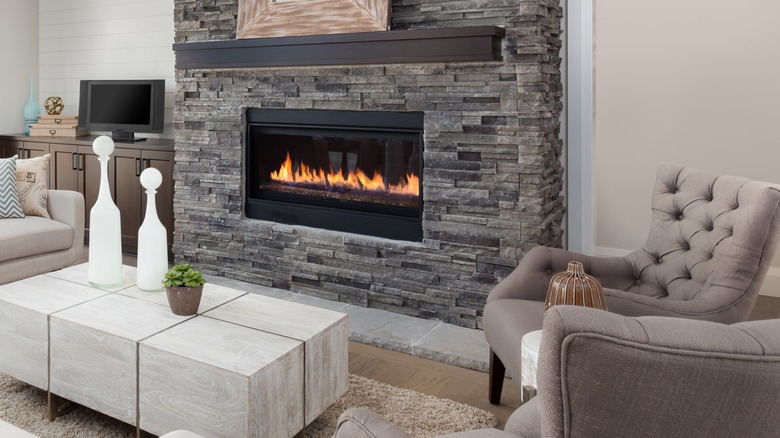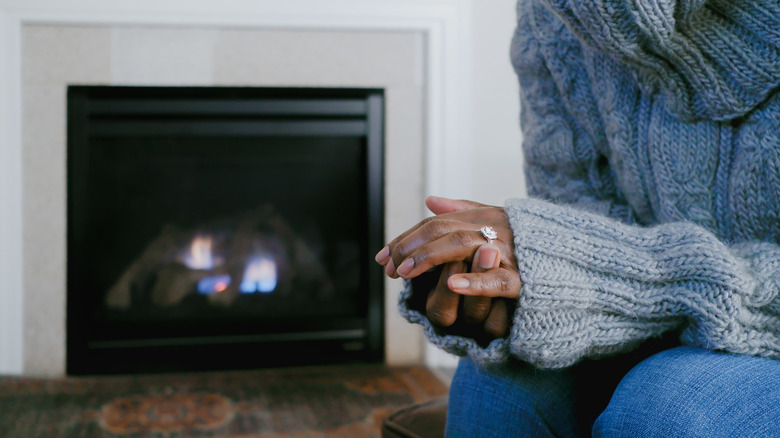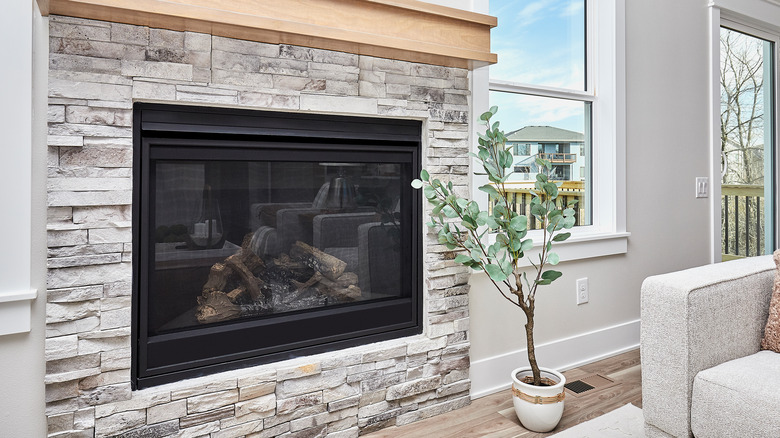How To Know If Your Gas Fireplace Is Dangerous (And What To Do About It)
When adding a fireplace to your home, you may have compared the operational costs and performance levels of gas stoves and their wood burning counterparts. If you decided on a natural gas fireplace, you probably preferred the benefits such as ease of use, immediate ignition, and adjustable flame levels.
However, if you didn't fully look into the hidden downside of gas fireplaces, you might have run into some concerns now that you've been using it for a while. The primary concern would be your family's safety. After all, the biggest drawback to a gas fireplace, especially an older model that is not in good condition, is the potential release of carbon monoxide into your home. When fuel does not fully combust, it can create carbon monoxide, or CO. This gas does not have any color, odor, or taste, which makes it difficult to detect. The early signs of CO poisoning resemble the flu, so people might not think it is carbon monoxide poisoning. A significant buildup of carbon monoxide in the bloodstream of humans and animals could lead to a loss of consciousness and eventual death.
So how do you know if your gas fireplace is emitting carbon monoxide and putting your family at risk? Should you also worry about a gas fireplace leak or explosion? Read on to learn about the steps you can take to monitor fireplace safety and what you can do if the appliance is not functioning properly and releasing too much CO.
Signs that your gas fireplace is dangerous to use because of carbon monoxide
Even though there is a risk of CO poisoning from a gas fireplace, there is a lower possibility of creating dangerous conditions in your home than a wood-burning fireplace. Home heating equipment such as furnaces, wood stoves, space heaters, and wood fireplaces are a leading cause of carbon monoxide poisoning.
Installing a CO alarm is the best way to monitor carbon monoxide build-up around your fireplace. These devices measure the concentration of carbon monoxide in the air and sound an alarm if levels are rising. Beyond using a detector, if your unit is releasing CO, there may be signs. Look for glass doors, covers, or other areas nearby that have fresh, black soot marks. Gas fireplaces should also burn with a blue flame. If you see orange or yellow, this could indicate a unit that produces carbon monoxide due to incomplete combustion. If the flames in the gas fireplace seem to be burning slower or smaller than normal, this is a sign of incomplete combustion and a potential release of CO.
If you suspect your gas fireplace is producing carbon monoxide, stop using it immediately. Leave your home and call for help. You should follow up with a call to a certified technician to check it and find the source of CO production. It is also recommended to conduct annual inspections of the fireplace and chimney to be sure it's safe to use before turning it on during colder weather.
Signs that you may have a natural gas leak in your fireplace
When you have a gas fireplace, a leak in the mechanism or supply line is a possibility. However, because modern fireplaces contain safety features, leaks do not occur regularly. The same safeguards built into the gas fireplace reduce the risk of an explosion. Hiring a professional to install the fireplace should give you peace of mind.
Natural gas is normally odorless and colorless, but suppliers add a chemical that makes it smell like rotten eggs, which is an indicator of a potential leak. If you smell natural gas when you initially turn on the fireplace, this does not necessarily mean there is a leak. It's normal for a little bit of natural gas to leak during the initial ignition, and the smell should dissipate in less than 10 minutes. If the odor is accompanied by a hissing sound, there may be a leak. Finally, if you notice sudden spikes in your natural gas usage, this could indicate a leak somewhere in the line.
If you believe there is a leak, turn off the fireplace and its gas supply. Evacuate the area and call a certified technician. The best way to protect your family from a fireplace gas leak is to have the unit inspected every year by a professional. Following tips for maintaining your gas fireplace greatly reduces the risk of a leak, too.


